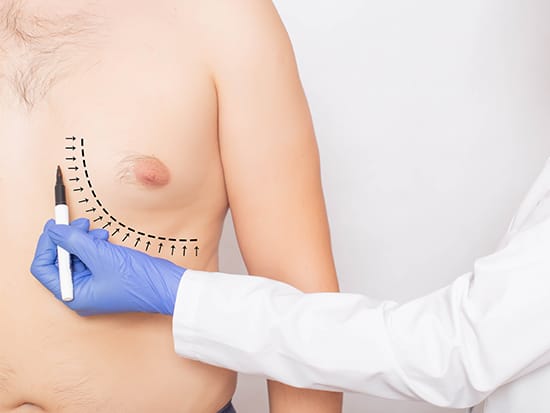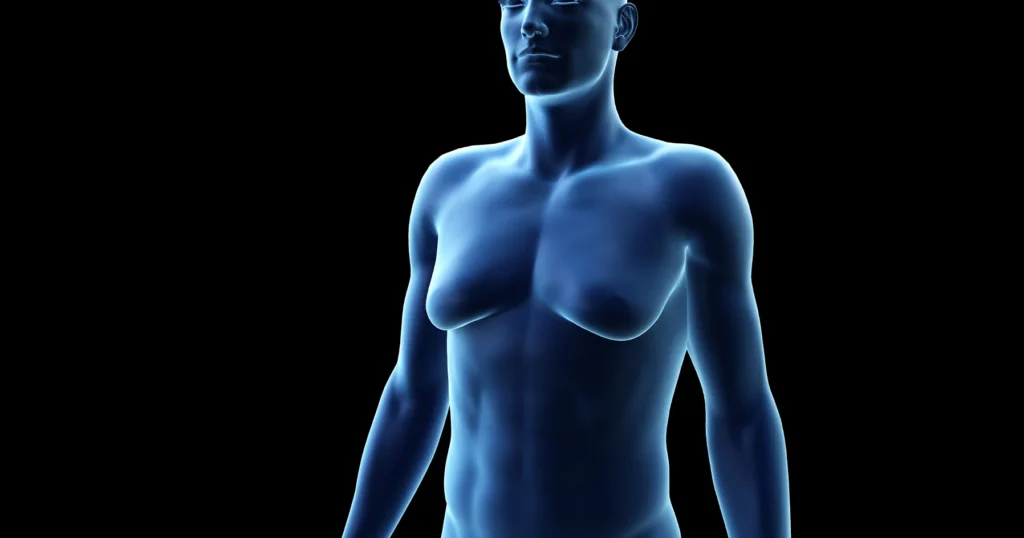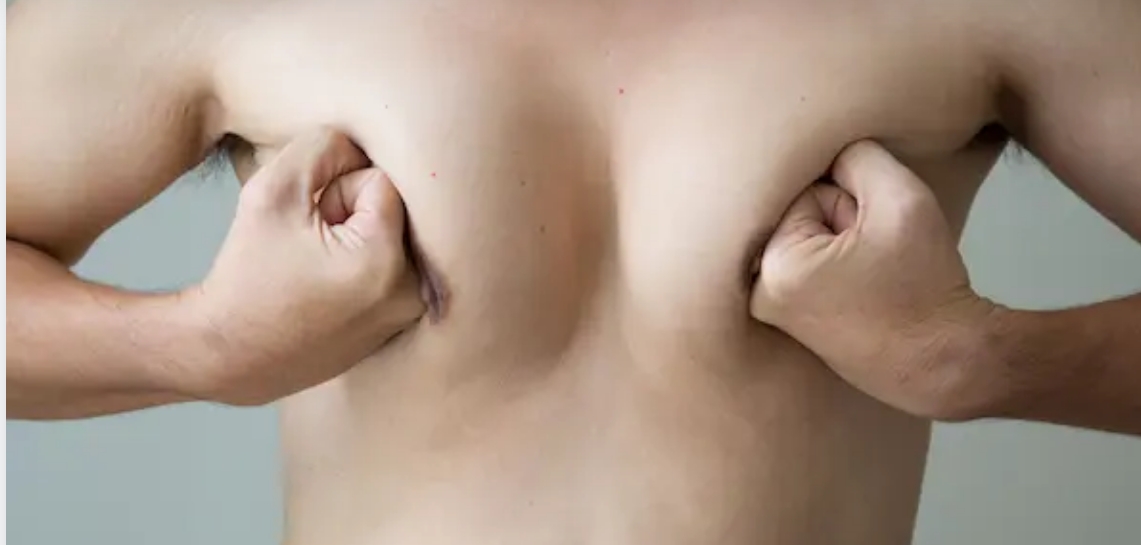What Is Gynecomastia Surgery?
Gynecomastia surgery is a procedure to reduce breast tissue in an assigned male at birth. It is also known as male breast reduction and reduction of mammoplasty. This surgery helps people who have gynecomastia, or enlarged male breast tissue. This procedure is chosen to remove extra tissue and fat from the breasts. This reduces their volume and allows a smaller, firmer chest. It can also improve your body image and self-esteem. Many patients choose this procedure to change their appearance, whether in clothing or not. It involves liposuction, surgery, or a combination of the two. Your provider will suggest the right method for your condition.
Factors Influencing Scarring In Gynecomastia Surgery
The level of scarring after gynecomastia surgery may vary depending on You may have seen gynecomastia scars and questioned “will my gynecomastia leave scars?” Answering this is a little more complex than you may think.
Everyone’s case is very unique and depending on a variety of factors, some of which we’ll outline right now, the level of scarring can vary dramatically.

Let’s break it down factors influencing scarring :
The approach taken by the surgeon: the skill and experience of the surgeon is the most significant factor when it comes to scarring after gynecomastia surgery. This extends not only to the choice of technique but also how much is done. Surgeons can use liposuction, how the incisions are made and how the tissues are manipulated can all contribute to scarring.
Surgeons who have performed the procedure numerous times are less likely to cause damage which helps with the healing process.
Individual Healing capacity: every human, of course, is unique. Healing is impacted by age, skin type, genetic predisposition, level of health, etc. – there’s simply no average from patient to patient. If you have a history of scaring, you’re likely to develop scars more easily than those who have never had them.
Smoking and lifestyle: smoking inhibits wound healing and increases your risk of complications including improper scarring. However, many other lifestyle choices can contribute to the overall health of individuals and the suitability of their body for the healing process. This includes diet, exercise, stress and so on.
Compliance with operative Instructions: Following the surgeons guidelines post surgery is vital for optimal healing and reducing scarring. This involves wearing compression garments refraining from activities and shielding incisions from sunlight.
Wound care and scar treatment: cleaning the incision site and keeping the area protected from infection are vital. There’s also a variety of techniques available for scar treatment, including massage and silicone sheets which can enhance the appearance of scars over time.
Gynecomastia Recovery Timeline
First Week: Recovery Phase and Second Week Swelling, bruising and discomfort are common symptoms for patients within the first two weeks of their gynecomastia surgery. One should strictly adhere to the surgeon’s instructions on bed rest, use of compression garments and pain control. Light activities can gradually be resumed while strenuous exercises are avoided. There may be some discharge from the incisions, hence the doctor may give advice on how to take care of them.
Week 3– 4: Early Healing Phase By third and fourth week swelling and bruising should have significantly gone down. Some tightness or numbness around the chest area may be experienced by patients during this time which is quite normal and temporary. Walking could be recommended as a way of promoting recovery rate through light exercise. To support the healing process and minimize swelling, patients must still put on compression clothes as advised.

Week 5– 8: Intermediate Healing Phase Within this period most initial swelling and bruising should have resolved. Patients may begin noticing their final breast contours although there could still be some residual swellings. Generally light to moderate workouts can resume but one must stay away from anything that is too extreme or comes into direct contact with their chest region. The incision lines might appear pinkish or raised although they fade off eventually over time
Weeks 9-12: Final Healing During the third month, you should start to progress to the final healing stage. By now, you can typically ease back into all your normal activities, including rigorous exercise, as your surgeon directs you. You may still have some residual swelling and numbness; however, over time, these symptoms will gradually improve. Incision lines will also fade and continue to soften.
Weeks 6-12: Long-Term Recovery Around the six-month mark, you can expect to see your ultimate gynecomastia surgery results. Whatever small amount of residual swelling or numbness that you may have will likely continue to fade. Be sure to use any scar care method your surgeon recommended in order to minimize any remaining incision line appearance. Keep up with regular appointments so your surgeon can assess your progress, and ask them if you notice anything unusual during your recovery.
Tips To Reduce Gynecomastia Surgery Scarring
Some scars can’t be stopped, but you can do many things to make them less easy to see.
- Pick a Top Doctor
The first way to keep scars small is to pick a top-notch, skilled gyno surgery pro. They can do the cut well and take care to hurt your tissue less. They can also tell you how to take care of yourself after so you heal the best you can. Make sure your doc knows a lot about fixing men’s chests and has the right papers. A good doc makes only small cuts and will give you advice to keep the cut line tiny and hard to see.
- Listen to Your Doctor
Obey all the care tips your doc gives you, both before and after the surgery. This is key to getting better. Your doc might tell you to wear tight clothes to keep swelling down and hold your skin and muscles right while you heal. Your doc will also teach you how to avoid pulling too much on the cut as it heals. Plus, stay away from the sun, as it can make your scars look worse.
- Use Scar Care Tricks
It’s key to use scar care ways to stop scars from looking weird. These can be using silicone sheets and gels to keep the scar moist and press it flat. Massaging the scar can help make lumps flat and soft. There are also special creams—or ones with onion stuff in them—that can make your scars less easy to spot.
Gynecomastia Procedures That Leave Fewer Scars
All gynecomastia surgeries produce some scarring, but certain approaches can result in fewer or less visible scars:
Liposuction: If you have too much fat under your skin or a bit of a gland problem in your chest, taking fat out with a tube might work well for you. This method uses very tiny cuts, often hidden under your arm or near the dark circle on your chest. So, you shouldn’t see many marks. These cuts are usually smaller than an inch and they tend to look better as time goes on.
Periareolar incision: This way makes a line around the dark circle that’s around your nipple. The different shade of this part can hide the line, making it hard to see. If your doctor is good at their job, the line should mix in with the dark edge of that circle.
Endoscopic surgery: In other diseases, endoscopic technique may be the only tool. As compared to the traditional open surgery, the endoscopic surgery will limit the visible scars to the areas that are natural and less noticeable and therefore the outcomes will be less prone to obtrusive scarring.
This helps to a large degree by the limitisms of scarring as it was in traditional open approaches. The incision scars usually are smaller than one inch in length and can be readily treated in the hidden parts i.e. the concealed areas of the body.
Laser or Radiofrequency-Assisted Liposuction: Even though the latest forms of liposuction such as the laser and radiofrequency-assisted varieties include the traditional liposuction, it is still a vital part of the liposuction procedure. Undoubtedly the benefits that slim liposuction can bring do not exclude the necessity of longer incisions. They however trim the extent of skin tightening and reduce the degree of scarring.
Advanced liposuction and the heat energy produced by it can stimulate collagen production, which makes scars less observable.
Good Candidates For Gynecomastia

regardless of body type. Additionally, surgical cure is not optimal for every one of the guys, who are suffering from the condition of gynecomastia. These are some of the considerations that make you a good candidate for gynecomastia surgery:These are some of the considerations that make you a good candidate for gynecomastia surgery:
Good Health: Patients must be in very good health condition and free of complications that if existed could increase risks of the surgery. This includes conditions such as diabetes that isn’t controlled, heart disease, and any bleeding disorders. Even if you have a chronic condition that is under control, your surgeon may ask you to receive clearance from your primary care physician before starting treatment. Active lifestyle and keeping the right body may also help you in your recovery after surgery.
Weight Management: Your current weight and history with weight loss are both factors to consider when undergoing surgery. If you are overweight or obese, it’s suggested that you lose weight before your breast reduction. Fluctuating weight can affect the results of your surgery, as it allows the breasts to retain fat tissue. It’s important to reach and maintain a stable weight for several months before surgery. Weight gain following the reduction can cause the appearance of gynecomastia to return.
Gynecomastia Surgery Losing Skin
So gynecomastia is not an issue of only one age group or age limit. But it is not always possible or even necessary to undergo surgery for the correction of gynecomastia. There are some requirements of individuals to be eligible for surgery, which we also call as candidates.
A candidate should be healthy overall and should not have medical conditions like uncontrolled diabetes and heart diseases which increase the risks and impair the healing. Also it is best when the individual has achieved stabilized weight and falls within the normal or healthy body mass index.
This is necessary because the fluctuation in weight can alter the results of the surgery. If the individual is into smoking, he should quit it at least a few weeks before the procedure and avoid it for some weeks after the surgery. Smoking can lead to slow healing. Coming of age, some surgeons believe to avoid surgeries for teenagers. But many cases have been seen of elderly men undergoing successful surgeries. So we can say that if each case is assessed by an expert surgeon and also if it is less severe, then teenage candidates can go for surgeries.
Moreover, there are cases in which the skin becomes loose or sags even after the extra breast tissues have been removed by the surgery. You can understand this point in the simplest way that if you keep a water filled balloon in your hand for a long time, the skin will stretch.
Similarly, the skin will lose its elasticity and will not shrink with the procedure. Aging and weight changes also decrease the skin’s elasticity and make it more prone to stretching. Obese patients face an amplified risk of sagging skin after significant weight loss because the skin has been stretched far. It is tough to reshape the skin and remove the excess skin. In that case, secondary surgeries may be needed for an effective result.
Conclusion
Getting rid of gynecomastia through surgery can really change your life. But it’s key to know that extra skin might be an issue for some people. If you had gynecomastia before, lost a lot of weight, are getting older, or your case is tough, it could mean your skin won’t be tight. This could mess with getting the look you want.
Cutting away extra skin or making it tighter may need to happen in these cases for a smooth, shaped chest. It’s very important to talk truthfully and in detail with a plastic surgeon who’s officially recognized when you meet with them.
Your doctor will look at how your body is built, chat about what you want and might see for your body, and plan out a way to treat you that’s just for you. This plan might mean you need more than one surgery, or some other treatments. Making an appointment for a talk with the right doctor is the beginning of getting a firmer, manlier chest.
By learning and putting what you need first, you can pick wisely and go ahead with the change you want. With smart planning before, thinking what’s real, and a skilled surgery team, surgery for gynecomastia can really turn your life around. It lets you feel sure again and makes your life better, and that lasts.
Contact us today and get the best offer!
Read Also:
Breast Reduction Surgery in Turkey: A Comprehensive Guide
FAQs
Can you get gynecomastia surgery without scars?
There are always some marks that will be present from a surgical procedure.
How long does it take for the chest to flatten after gynecomastia surgery?
The chest may stay swollen for about 3-4 months before it starts flattening and taking on its final shape.
Does the chest look normal after gyno surgery?
The chest can appear completely flat and manly after proper medical procedures have been taken.
Why is my chest not flat after gynecomastia surgery?
This could be due to residual swelling, loose skin or inadequate removal of tissue that might make the chest appear non-flat at first.
What are the disadvantages of gynecomastia surgery?
Some potential drawbacks may include scarring, numbness, contour irregularities and sometimes reoperation may be necessary.
Can you feel your nipples after gynecomastia surgery?
Initially there is often some temporary numbness or altered sensation around the nipple area.
What are the bad results of gynecomastia?
Bad results can manifest as unacceptable contours, excessive scar formation, misplaced nipples and persistent breast masses.
Is gynecomastia shameful?
No, gynecomastia is quite common and should never bring shame upon someone’s life.
What does grade 1 gyno look like?
Grade 1 Gynecomastia – Small breast enlargement with no excess skin sagging
Can Grade 2 gyno go away naturally?
G2 Gynaecomastia which has moderate breast enlargement together with excess skin may not recover naturally without treatment.

